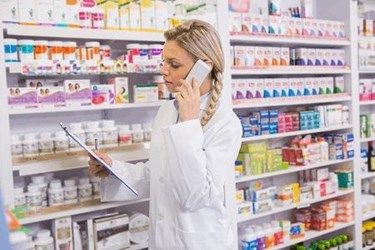Why You Shouldn't Worry About Biosimilar Retail Pharmacy Uptake

By Anna Rose Welch, Editorial & Community Director, Advancing RNA

A few months ago, I attended the CBI 12th Annual Biosimilars Summit. At this event, I was struck by the diverse approach toward biosimilars in two separate organizations: the UVA Health System (an integrated delivery network, or IDN), and Walmart’s retail pharmacy. As I discussed in the first of this two-part article, there is a lot of watch-and-wait happening in the industry among IDNs, payers, physicians, and pharmacies. Noah Greenberg, a pharmacist in the specialty medications services division of UVA Health System, made it clear there is still a lot of caution over biosimilars in the UVA Health System. However, when it came to Michael Jacobs, the senior director of health and wellness for Walmart pharmacies, I was pleasantly surprised by the confidence he had about the positive impact the retail pharmacy model can have on biosimilars in the upcoming years.
Role Of Biosimilars In The Retail Pharmacy Setting
Though at this juncture biosimilars play a less-prominent role in IDN’s, we received more reassuring news about their future role in the retail pharmacy setting. According to Michael Jacobs, senior director, health and wellness, for Walmart, though it’s unlikely retailers will promote biosimilars when there are only five products approved, biosimilars are not too far away from entering the retail setting. Once there are two or three competitors per class, he expects things to start changing. And there are a number of ways retail pharmacies stand ready to face biosimilars.
Obviously, one of the biggest concerns about biosimilar uptake has to do with interchangeability at the pharmacy level. Specifically, depending on the state laws, there will be requirements for the pharmacy to contact the physician when a biosimilar is given in place of a brand. I’ve heard a number of arguments, including that these requirements (which vary by state) will strain employees, be confusing, and be a hassle for busy physicians. However, making sure a pharmacy is equipped to regularly contact physicians about a substitution doesn’t seem to be a concern. According to Jacobs, pharmacies are appropriately staffed to handle anywhere from 75 to 100 prescriptions per day on the low end and 1,200 to 1,500 on the high end. And built into that workflow is time for pharmacists to contact physicians.
“It might not be every hour of every day,” he qualified. “Physician calls might be saved for the morning or lunch hour, depending on what the physician prefers. But the pharmacists already have those relationships built.”
In addition, retail pharmacies will be equipped to know the different rules and requirements as they relate to interchangeability. A pharmacist can easily go into the computer system, provide ZIP codes, and identify relevant messages pertaining to certain medications. The system is also set up to remind pharmacists to reach out to physicians about certain medications, which can come in handy when it’s time to inform them of a switch to a biosimilar.
“With that in mind, I think there’s a high probability of success for promoting biosimilars in the retail model,” he explained.
The financial side in terms of billing — whether it’s through the pharmacy or medical benefit — is still a little shaky. But Jacobs also expressed optimism this won’t be a stumbling block for retail pharmacies. “There’s not a retail drug store that cannot bill through both; it’s not that big of a deal.”
His confidence stems from the fact that retail pharmacies, such as Walmart, already have established relationships with payers and specialty contracts. (In fact, Walmart has its own specialty program for distribution.) Not to mention, many pharmacies — especially those retail brands that have many different branches and locations — are electronically connected to each benefit.
This fact was particularly resonant given something I learned from Noah Greenberg, a pharmacist in the UVA Health System (which I covered in my first article). A complicating factor at UVA, and perhaps at some other medical centers, is how these products will be billed. For instance, some payers require infusion products, such as Zarxio and Inflectra, to be billed through the pharmacy benefit, rather than the medical benefit. “If I were on Remicade, I would have to pay my copay through the pharmacy benefit,” Greenberg described. “If a physician tried to bill it to the medical benefit, the claim would be denied.”
But Jacobs argued this would not lead to confusion in retail pharmacies. “We’re going to know where to bill it and how to bill it, because we have instantaneous outreach,” he claimed. “If there’s a patient assistance program, we’re going to have an online adjudication system that’s going to tap into that.”
It’s hard to miss the fact that a number of different retail urgent-care type clinics have been established around the country. For instance, Walmart just teamed up with an organization that is responsible for managing upwards of 1,200 retail clinics nationwide. The prevalence of these clinics has been attributed to the convenience and affordability of having retail models for physicals and other daily healthcare needs. We saw it with the move of retail stores like Walmart and Target into the grocery business. Consumers like having a variety of different needs met at one brick-and-mortar location. This, specifically, is where Jacobs sees the retail market being of benefit to the promotion of biosimilars.
“Retail exposure can help people recognize a biosimilar as not only a healthcare item, but also a convenience item,” he said. “Patients can begin to recognize retail as the place to go for medical contact without having to make an appointment.”
